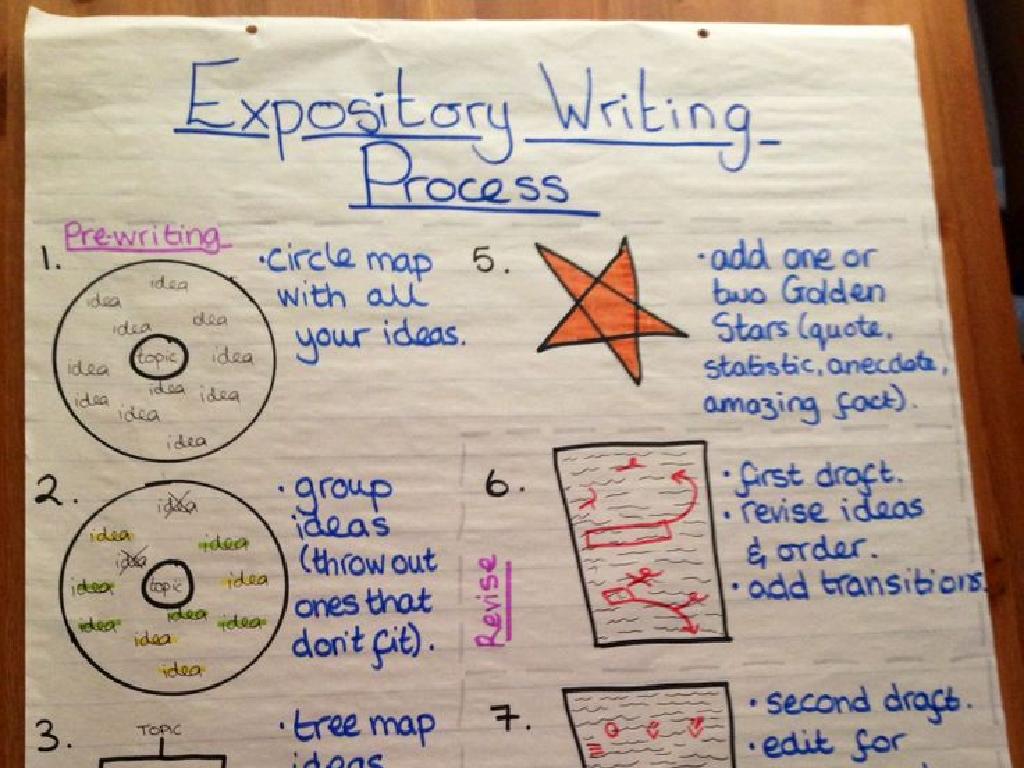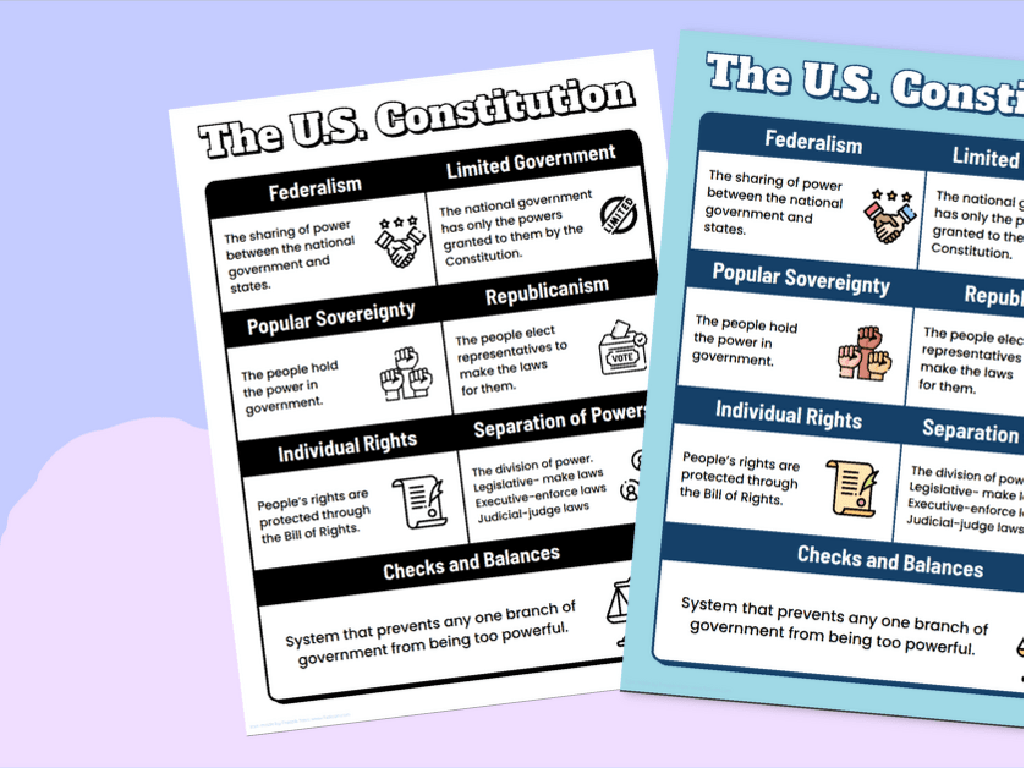Match Clocks And Times
Subject: Math
Grade: Third grade
Topic: Read And Write Times
Please LOG IN to download the presentation. Access is available to registered users only.
View More Content
Introduction to Telling Time
– Greetings, brilliant minds!
– Today’s focus: Clocks and Times
– Why learn to tell time?
– Knowing time helps us with daily activities
– Organizing our day with time
– We use time to schedule work, play, and rest
|
Begin the class with an enthusiastic greeting to capture the students’ attention. Introduce the concept of clocks and times, emphasizing the importance of time in our daily lives. Explain that understanding how to read clocks and match times is a skill that will help them organize their day, from knowing when to get up for school to scheduling their homework and playtime. Encourage them to think about how they already use time in their routines. This introduction sets the stage for the lesson and highlights the practical applications of the skill they are about to learn.
Parts of a Clock
– Identify the hour hand
– The short hand that indicates the hour
– Recognize the minute hand
– The long hand that points to minutes
– Understand the numbers 1-12
– The clock face has numbers from 1 to 12
– Learn hand functions
– Short hand shows hours, long shows minutes
|
This slide introduces students to the basic components of an analog clock, which is essential for learning to tell time. The hour hand is shorter and indicates which hour it is, while the minute hand is longer and points to the minutes. The numbers 1 through 12 represent the hours in a day. Understanding these parts is crucial for students to start matching clocks with the correct times. Use real clocks or clock diagrams to demonstrate. Have students practice by pointing out the hour and minute hands and identifying the numbers on various clocks. This will prepare them for more advanced time-telling activities.
Understanding Whole Hours on Clocks
– What is a whole hour?
– A whole hour has the minute hand on 12.
– Hour hand and minute hand positions
– If the hour hand points to 3 and minute hand at 12, it’s 3 o’clock!
– It’s ‘o’clock’ when minute hand is at 12
– Practice time with examples
– Example: 1:00, 2:00, 3:00 – Notice the minute hand position.
|
This slide introduces the concept of whole hours to third-grade students. Emphasize that a whole hour is marked by the minute hand pointing to the 12, which means no minutes have passed within that hour. The hour hand’s position indicates the specific hour of the day. Use classroom clocks or visuals to demonstrate different whole hours. For practice, show various clock faces and ask students to identify the time. Encourage students to draw their own clock faces representing whole hours. This will help solidify their understanding of reading clocks and telling time to the nearest hour.
Understanding Half Past and Quarter Hours
– ‘Half past’ means 30 minutes after
– Like half past 2 is 2:30
– ‘Quarter past’ and ‘to’ explained
– 15 minutes after is ‘quarter past’. 15 minutes before is ‘quarter to’
– Visualizing ‘half past 3’
– Draw the hands on a clock for 3:30
– Practice with different times
|
This slide introduces students to the concepts of ‘half past’ and ‘quarter hours’ in telling time. ‘Half past’ refers to 30 minutes after the hour, which is the halfway point of an hour. ‘Quarter past’ means 15 minutes after the hour, and ‘quarter to’ means 15 minutes before the hour. Use a clock face to help students visualize these times, especially ‘half past 3’. Encourage students to draw the minute hand pointing to the 6 and the hour hand halfway between 3 and 4. After explaining, engage the students in an activity where they draw the hands on a clock to match given times, such as ‘quarter past 2’ or ‘quarter to 7’. This will help solidify their understanding of these concepts.
Reading Digital Clocks
– Digital clocks use numbers
– e.g., 3:00 or 3:30 shows time digitally
– First number is the hour
– 3 in 3:00 means it’s the 3rd hour
– Second number is minutes
– 30 in 3:30 means 30 minutes past the hour
– Match digital times to clocks
– Practice matching digital to analog clocks
|
This slide introduces students to reading digital clocks, a skill essential for telling time. Emphasize that digital clocks display time using numbers, with the first number indicating the hour and the second the minutes. Use examples like 3:00 or 3:30 to illustrate this point. Then, guide students through an activity where they match these digital times to corresponding clock faces. This will help them visualize the concept and understand how to read both digital and analog clocks. Encourage students to practice with various times and ensure they grasp the difference between hours and minutes on digital displays.
Matching Clocks and Times
– Match clock faces to digital time
– Observe the position of the hands
– The short hand shows the hour, the long hand shows the minutes
– Practice telling time together
– Try matching on your own
– Use your skills to find the right digital time for each clock face
|
This slide is designed to help students learn to match analog clock faces with their corresponding digital times. Start by explaining how to read the hour and minute hands on a clock face. Then, demonstrate with a few examples by showing different clock faces and working out the digital time together as a class. Afterward, give students a chance to practice this skill individually with a variety of clock faces. Provide clocks with clear hour and minute hands and ensure digital times are displayed in a format familiar to the students. Encourage them to check their work by counting by fives to add up the minutes, and to remember the position of the hour hand relative to the numbers on the clock.
Practice Time: Matching Clocks and Times
– Match clocks to digital times
– Use your worksheet for practice
– Find the clock face and write the time it shows in numbers
– Work with a classmate
– Pair up to help each other
– Discuss your answers together
– Explain why you think your match is correct
|
This slide is designed for a classroom activity where students will apply their knowledge of reading analog and digital clocks. Provide each student with a worksheet that has a variety of clock faces. Their task is to write the corresponding digital time for each clock face. Encourage them to work with a partner to foster collaboration and discussion, which will help them learn from each other and confirm their understanding. As they work, circulate around the room to offer guidance and support. After the activity, bring the class together to discuss some of the matches and the strategies they used to determine the correct times.
Class Activity: Craft Your Own Clock
– Create a paper clock with hands
– Use the clock to display times
– I’ll call out times, and you show them on your clock
– Practice reading different times
– Enhance time-telling skills
|
In this hands-on activity, students will create their own paper clocks with movable hands, which will serve as a practical tool for learning to tell time. Provide each student with the necessary materials, including a paper plate, brads, and cut-out hands. As you call out different times, students will use their clocks to represent the time visually. This activity not only reinforces the concept of hours and minutes but also aids in developing fine motor skills. For differentiation, consider varying the complexity of the times you call out, and for assessment, have students pair up and quiz each other on reading times from their clocks. Possible variations of the activity could include matching digital times to their analog representations or solving time-related word problems using their crafted clocks.
Great Work on Telling Time!
– Celebrate your learning today
– Hour hand is short; minute hand is long
– The short hand points to the hour
– Practice at home with any clock
– Use a kitchen or bedroom clock to practice
– Review what we’ve learned
– Go over your notes from today
|
This slide is meant to wrap up the lesson on telling time. Congratulate the students on their hard work and remind them of the key points: identifying the hour and minute hands on a clock. Encourage them to practice telling time using clocks they have at home to reinforce the day’s lesson. As a review, ask them to go over their notes and try to read different times throughout the evening. For the next class, consider preparing a small quiz or interactive activity to assess their understanding and to provide additional practice.






